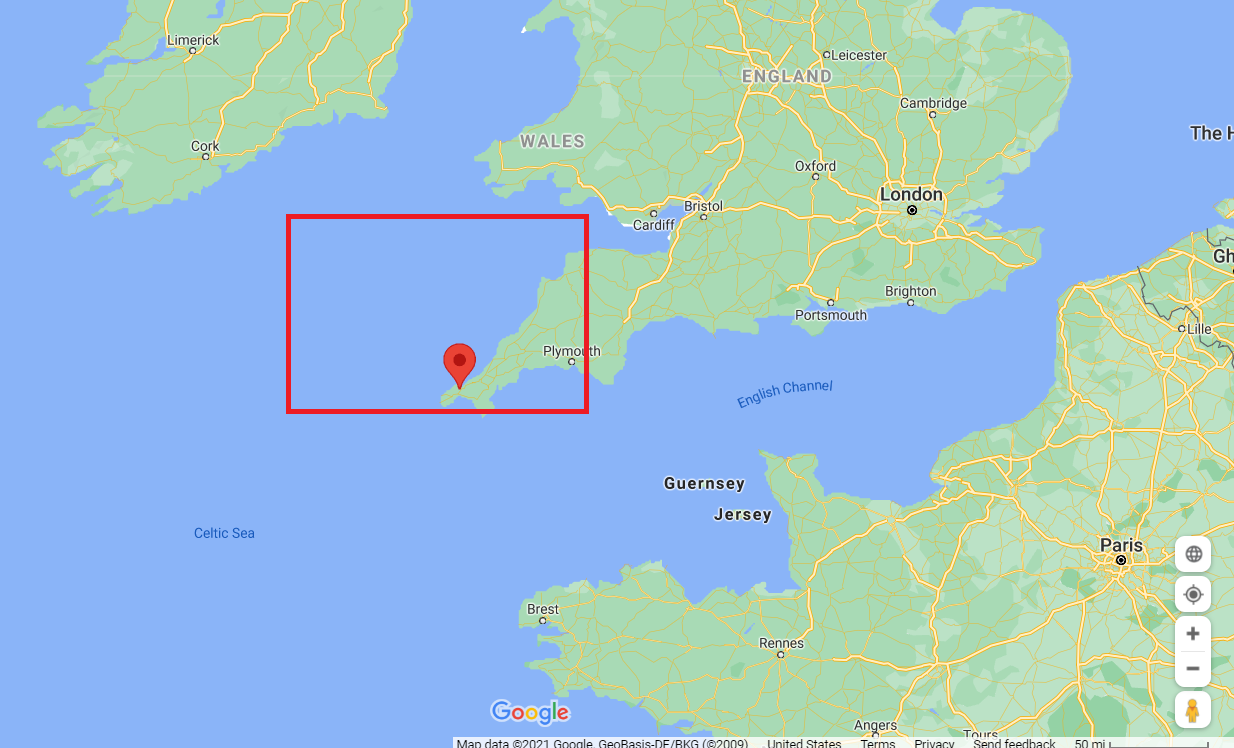Since at least Monday, United States Navy aircraft, British sea and air forces, and French anti-submarine aircraft have been engaged in unusual operations in and around waters proximate to the location of this week’s G-7 summit. I have highlighted the relevant waters in the context of this week’s G-7 summit at Carbis Bay in Cornwall, England. The summit begins on Friday and ends on Sunday.

The unusual deployments and the G-7 summit’s proximate location beg a question: Is Russia operating a submarine in these waters?
NATO activity certainly lends to that prospect. On Monday, a French air force surveillance Beechcraft Super King Air 350 was in the area, and a U.S. P-8 Poseidon aircraft operated off the northern Cornish coast. The U.S. P-8 then transited to Europe. On Tuesday, a British (either Royal Air Force or Royal Navy Fleet Air Arm) Super King 350 was operating in the area.
On Wednesday, a British coast guard helicopter was also operating in the same area. Most notable, however, was the deployment on Wednesday of a Royal Air Force P-8 Poseidon. It was deployed 500 miles from its RAF Lossiemouth home base in Scotland, running search patterns at low altitude and speed in the area. It operated around and just outside the edges of Britain’s 12-mile maritime border. Also on Wednesday, the Royal Navy’s Type 23 frigate HMS Northumberland was operating in a search patrol pattern. Equipped with the highly advanced Sonar 2087 system, Northumberland has the ability to detect Russian submarine forces at range. Northumberland has been deployed for G-7 security rather than specific anti-submarine activity. But the tempo and range of the other anti-submarine assets employed here are notable.
This area is well outside the patrol sectors for Russia’s latest Borei-class nuclear ballistic missile submarine fleet. But that is not the case for the two boats of Russia’s newest Yasen-class nuclear attack-cruise strike submarine fleet, the Kazan and the Severodvinsk. Extremely quiet, these Northern Fleet boats are designed to penetrate undetected into the Atlantic. In war, they would attempt to close with the U.S. east coast and launch Russia’s latest generation cruise missiles. Kazan has just reached full operational status. Although these boats are not, as some have claimed, nearly undetectable, they have on occasion been able to evade NATO sensor nets. British Defense Secretary Ben Wallace said a Russian submarine operated in the Irish Sea in 2020. I understand that this was either the Kazan (on advanced sea trials) or the Severodvinsk.
Now consider the G-7. Furious that it has been suspended from the group since its 2014 seizure of Crimea from Ukraine, something former President Donald Trump attempted to change, Russia would have political cause to deploy a submarine off this year’s summit location. That political interest would find further fuel for two other reasons. The first is Russian President Vladimir Putin’s passion for what the Russians refer to as “special” operations. Putin is particularly proud of the submarine force, lavishing it with strategic planning priority and associated resources. The second is Putin’s enjoyment at seeing what he can get away with in relation to testing British security. Putin assumes, with unfortunate credibility, that Britain will tolerate areas of his aggression so as to retain Russian financial interests on its soil.
The French Embassy, the U.S. Navy, and the British government declined to comment.

